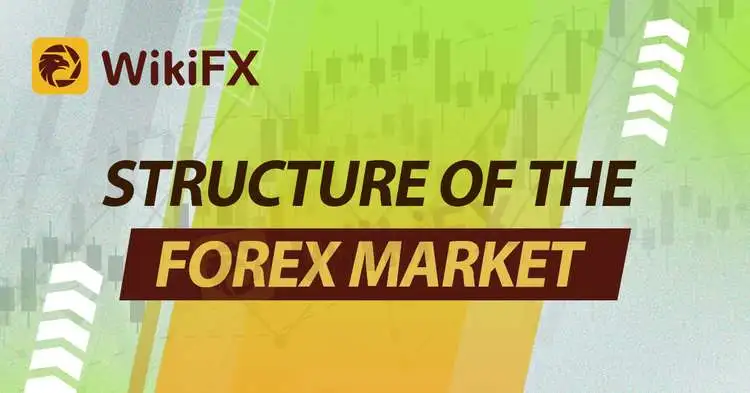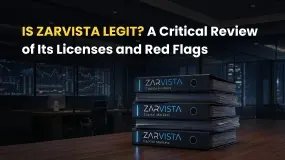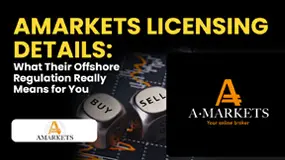STRUCTURE OF THE FOREX MARKET
Abstract:The Forex market is a textbook example of a perfect market built by humans. A market is defined as any location where buyers and sellers come together. When there are numerous buyers and sellers, and they are all aware of who has the best prices, perfect competition is accomplished. Consider ordering your favorite pizza for the greatest price and having it delivered in less than a second. That is what the forex trading market is capable of, despite the fact that it solely deals with currency exchange.

The Forex market is a textbook example of a perfect market built by humans. A market is defined as any location where buyers and sellers come together. When there are numerous buyers and sellers, and they are all aware of who has the best prices, perfect competition is accomplished. Consider ordering your favorite pizza for the greatest price and having it delivered in less than a second. That is what the forex trading market is capable of, despite the fact that it solely deals with currency exchange.
MARKET CONCENTRATION
When we have a single seller, whether it is a bank or a pizza restaurant, they may set the price to whatever they see suitable and even manipulate it at their leisure. This is a centralized market. Obviously, unless you are the one making the decisions, a centralized market is not advantageous for you. The good news is that the forex market is now decentralized; thus, let us examine the structure of this dynamic market.
PARTICIPANTS IN THE FOREX MARKET – DECENTRALIZED MARKET STRUCTURE
With the technological revolution, the Forex market structure was reorganized, and it is now an even more efficient market. The Spot Forex market is decentralized, which means no one or centralized player controls the market. Furthermore, because so many people influence the price of a currency pair, there is no one price for a given currency at any given time. Because quotes from various currency dealers differ, the price you see when trading is the retail price, which is determined by matching your buy or sell request with the best price provided in the liquidity pool.
While this may appear chaotic, the forex market is well organized and may be compared to layers or ladder rungs where each player seeks counterparties. The large banks are at the top of the ladder, while retail dealers are at the bottom. Let's take a look at what's available on each rung of the forex market structure.
THE INTERBANK MARKET
Banks in the Interbank Market want to deal with large amounts of FX and are seeking for those who can match their capacity requirements. Of course, this is when other banks enter the picture. This is the interbank market layer of the forex market structure, and it is located at the very top of the ladder. This layer's players trade directly with one another or through electronic or voice brokers such as Reuters Matching and EBS (Electronic Brokering Services). These brokers fiercely compete with one another in order to provide the greatest prices, which can only be obtained when you are linked to a bigger number of interested parties. More parties equal more liquidity, which equals lower interest rates. As a result, some currency pairings are more liquid with one broker than another.
It's also worth noting that while all banks in the interbank market may see the rates that each other is providing, it doesn't guarantee that any of them can make trades at those rates. Other considerations, such as reputation and credit status, come into play here.
THE INSTITUTIONAL SECTOR
Under the interbank market, the next rung of the ladder is occupied by hedge funds, retail market maker brokers, ECN brokers, and other financial institutions that are unable to establish credit agreements with the large banks and, as a result, must interact with commercial banks. This serves as a link in the forex market system between the interbank market and retail traders. While still giving better rates than retail traders, the rates offered here are somewhat higher and more costly when compared to interbank rates.
RETAIL INDUSTRY
The retail dealers are at the bottom of the food chain. Retail traders were formerly unable to engage in the forex market; now, owing to electronic trading, retail brokers, and the internet, even the average individual may now trade currency pairs with ease. Retail traders may not always obtain the best prices when compared to interbank markets, but in the struggle for clients, assisted by technology, major reputed brokers can give spreads and circumstances that put retail traders on level with the larger banks.

Related broker





Read more

Is ZarVista Legit? A Critical Review of Its Licenses and Red Flags
For traders asking, "Is ZarVista legit?", the evidence points to a clear and strong conclusion: ZarVista operates as a high-risk broker. While it shows a modern interface and different account types, these features are overshadowed by major weaknesses in how it is regulated, a history of legal problems, and many user complaints. This article will break down these issues to give you a complete view of the risks involved. Our analysis shows that the chance of losing capital when dealing with ZarVista is very high. The combination of weak overseas licensing and documented problems creates a situation where trader funds are not properly protected.

AMarkets Licensing Details: What Their Offshore Regulation Really Means for You
When choosing a broker, the most important question is always: "Are my funds safe?" The answer depends on the broker's regulatory framework. For a company like AMarkets, which has been operating since 2007, understanding its licensing isn't just about checking a box. It's about understanding what that regulation truly means for your protection as a trader. This article provides a clear, detailed breakdown of AMarkets' licenses, what their offshore status really means, the extra safety measures it uses, and the risks you need to consider. We will go beyond marketing claims to give you factual, balanced information about their official licenses and other trust signals, helping you make a smart decision.

AMarkets Safety Review: Is Your Money Protected?
The question "Is AMarkets safe?" is the most important thing any trader can ask before investing. Putting your capital in a trading company requires a lot of trust, and the answer isn't simply yes or no. It's complicated and depends on understanding how the company works, what protections they have, and their past performance. To give you a clear answer, we've done a complete safety review of AMarkets. Our research looks at three main areas, each examining a different part of the company's safety. We'll share what we found using facts you can check, so you can make your own smart decision about whether your capital will be safe.

Why Do You Always Lose When Trading?
With the year ending and 2026 just around the corner, here comes the golden question: are you profitable this year? If not, this article is a must-read!
WikiFX Broker
Latest News
JRJR Review: Why a "Valid" License Can't Hide the Withdrawal Nightmare
ZarVista Review 2025: A Complete Look at Its High-Risk Profile
Voices of the Golden Insight Award Jury | Greg Matwejev, Chief Market Strategist of BCR
EC Markets Opens New Marketing Hub in Central Limassol
London Capital Group – Regulation & Genuine User Reviews
Why Do You Always Lose When Trading?
Coinbase Expands Into Stocks and Tokenized Assets
Titan Capital Markets: The "Token" Trap Hiding Behind a Forex Mask
Should You Delete Every Indicator from Your Charts? Let’s Talk Real Trading
Is ZarVista Legit? A Critical Review of Its Licenses and Red Flags
Rate Calc

